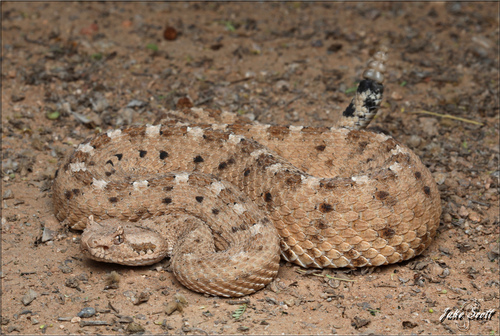
Sidewinder
The sidewinder rattlesnake, Crotalus cerastes, elegantly navigates desert sands with its unique sidewinding motion. Its horn-like scales and heat-sensing pits make it a master predator in the arid landscape, playing a vital role in controlling rodent populations while showcasing remarkable adaptations to extreme environments.
5-20 years
Lifespan
94.0 - 303.0 g
Weight
Length: 43 - 76 cm
Size
Low
Aggression
Least Concern
Conservation Status
Stable
Population Trend
Characteristics
Crotalus cerastes, commonly known as the sidewinder rattlesnake, inhabits sandy deserts in the southwestern United States and northwestern Mexico. It is renowned for its unique sidewinding locomotion, which allows it to move efficiently across hot sand. This small rattlesnake possesses horn-like supraocular scales above each eye, giving it a distinctive appearance.
Distribution Range of the Sidewinder
Crotalus cerastes, commonly known as the sidewinder rattlesnake, is native to the deserts of the southwestern United States and northwestern Mexico. Its geographical distribution includes parts of southeastern California, southern Nevada, southwestern Utah, western Arizona, and extends into the northeastern region of Baja California and northwestern Sonora in Mexico.
Sidewinder's Habitat
Environmental Conditions
The sidewinder rattlesnake inhabits arid desert environments characterized by sandy or gravelly terrain. These regions typically experience extreme temperature variations between day and night, with hot, dry days and cooler nights. Vegetation is sparse, primarily composed of low shrubs, cacti, and occasional grass patches.
Ecological Niche
Crotalus cerastes is well adapted to its desert habitat. It exhibits a unique sidewinding locomotion that allows it to move efficiently across loose, sandy surfaces without overheating its body. The sidewinder is a terrestrial predator that primarily preys on small mammals such as rodents and occasionally lizards. Its ecological niche involves utilizing its cryptic coloration and ambush strategy to hunt prey, while its specialized heat-sensing pits aid in detecting warm-blooded animals in its arid environment.
Copyright @ Nature Style Limited. All Rights Reserved.
 English
English